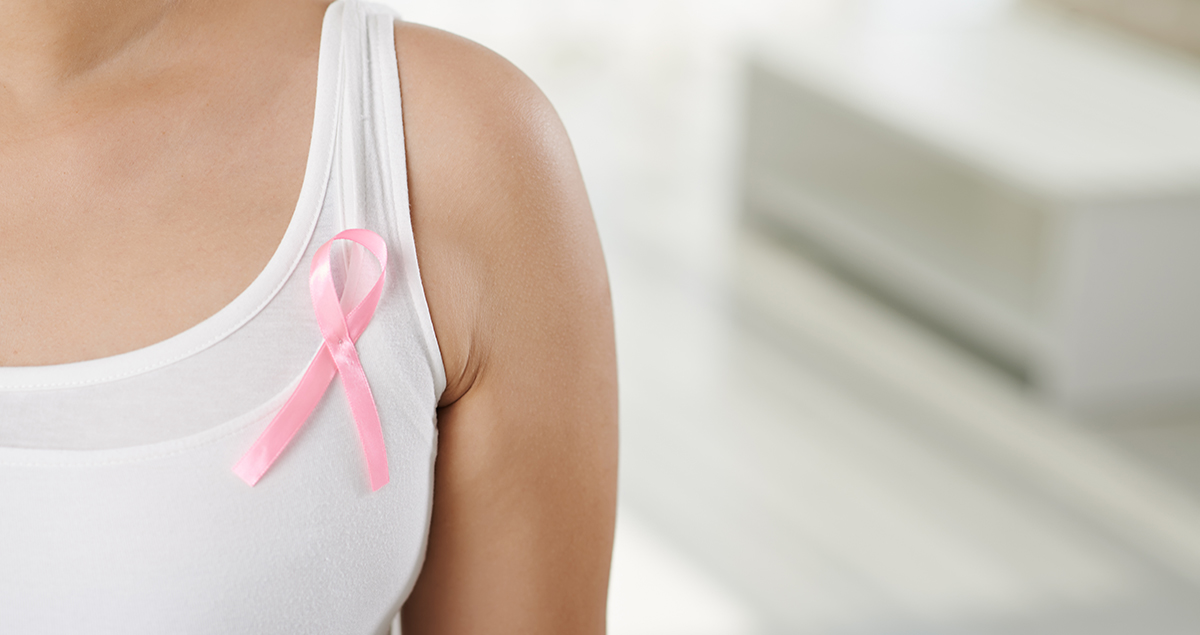Breast cancer is one of the most commonly diagnosed cancers in American women. The average risk of developing the disease is about 12 percent, which means that one out of every nine U.S. women will be diagnosed with breast cancer. With a disease this prevalent, every woman should be aware of the signs of breast cancer. The American Cancer Society says it is very important for women to be aware of how their breasts normally look and feel and to report any changes to a health care provider right away.
WATCH VIDEO: Eric Oristian,MD, medical director, Breast Center, discusses the causes, symptoms and risk factors for breast cancer.
Breast Cancer: Spot the Signs
Early breast cancer doesn’t usually cause any symptoms, so it’s critical to get regular mammograms. Screening guidelines are based on your age and medical history, so be sure to ask your doctor how often you should get a mammogram. Signs of breast cancer may appear as the tumor grows. If you experience any of these symptoms, you should see your health care provider. Most often, they aren’t due to cancer and may be caused by another health problem. Only your doctor can diagnose them for sure.
Lump A lump or mass in the breast is the most common symptom of breast cancer. It will feel like a hard knot or thickening inside the breast or underarm area. You should have any new lumps checked by a health care professional.
Swelling Breast swelling may occur before you feel a lump in your breast, so be sure to tell your doctor if you experience this symptom. You may also find unexpected swelling around your collarbone or armpit, which could indicate that breast cancer has spread to your lymph nodes in those areas.
Nipple Discharge Liquid leaking from your nipple doesn’t always indicate a medical problem. Signs of a more serious condition such as breast cancer include sudden discharge without squeezing the nipple, leaking from only one breast, and liquid that is bloody or clear (not milky).
Breast Changes Changes in the size or shape of your breast can indicate a medical problem. You should also look for changes to your nipples, such as if a nipple turns inward and doesn’t return to its normal shape.
Pain Breast pain or discomfort is most typically related to your menstrual cycle. But sometimes pain can be a sign of breast cancer. Tell your doctor if you have breast pain that is severe or persists and is not related to your menstrual cycle.
Reduce Your Breast Cancer Risk
Eric A. Oristian, MD, is the medical director of the Holy Cross Hospital Breast Center, the first breast center in Montgomery County, Md. to be accredited by the American College of Surgeons' National Accreditation Program for Breast Centers (NAPBC). Dr. Oristian says there are many healthy habits women can adopt to decrease their risk of breast cancer. “First, keeping a low weight, keeping a BMI below 30 decreases the risk of breast cancer by 30 percent,” Dr. Oristian says. “Refraining from alcohol intake. Limiting it to 3 or 4 glasses of alcohol a week also cuts the risk of breast cancer by 10 percent. Just being active. Women who come home and sit on the couch for 3 hours have a 20 percent increase in the risk of breast cancer versus people who come home from work and are actually up and mobile. Smoking has a significant impact on the development of breast cancer, particularly if smoking begins before the time of the first birth.”
Watch Dr. Oristian talk more about what causes breast cancer and how to identify it:
To learn more about diagnosing and treating breast cancer, visit the Breast Cancer section of our website. To schedule a breast screening appointment, click here.
Holy Cross Health presents the information in this blog as a resource for our community. It is not intended to replace professional medical advice or to endorse any particular entity or service. Personal health problems should be brought to the attention of the appropriate health professionals.

